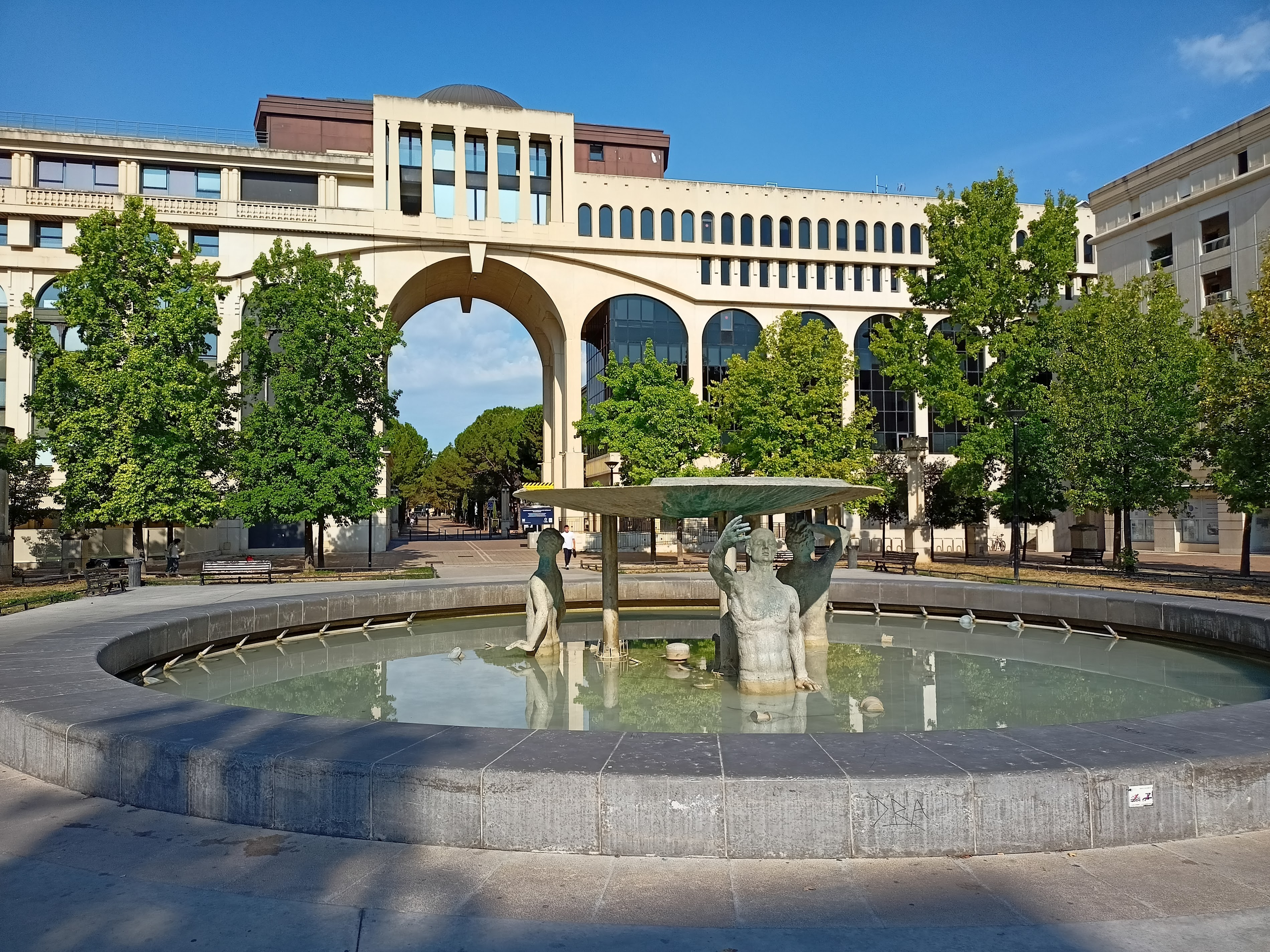Place de Thessalie: A Modern Oasis in Montpellier's Urban Landscape
In the heart of Montpellier's Antigone district, a striking example of contemporary urban design can be found. Place de Thessalie stands as a testament to the city's commitment to blending modern architecture with classical inspirations. This unique square, with its grand proportions and neoclassical elements, offers visitors and locals alike a space for relaxation, reflection, and community gathering.

A Vision of Modern Neoclassicism
Place de Thessalie was conceived as part of the ambitious Antigone project, which was designed by Spanish architect Ricardo Bofill in the 1970s. The square's design is deeply influenced by neoclassical principles, reimagined through a modern lens. Visitors are immediately struck by the symmetry and grandeur of the space, which is reminiscent of ancient Greek and Roman forums.
The square is flanked by imposing buildings that feature colonnades, arches, and other classical architectural elements. These structures are constructed using a distinctive pink-hued stone, which gives the entire area a warm, inviting atmosphere. The use of this material creates a visual connection to Montpellier's historic center, where similar stone is often seen in older buildings.
Things to do in Montpellier
A Space for Community
While the architectural design of Place de Thessalie is undoubtedly impressive, it's the square's function as a public space that truly brings it to life. The open layout is carefully designed to encourage social interaction and community gatherings. On any given day, the square is filled with a diverse mix of people – students chatting on benches, families enjoying picnics, and office workers taking a lunch break.
The square is adorned with carefully manicured green spaces and water features, providing a refreshing contrast to the surrounding stonework. These elements not only enhance the aesthetic appeal of the area but also create a more pleasant microclimate, offering respite from the Mediterranean heat during summer months.
A Cultural Hub
Place de Thessalie serves as more than just a picturesque spot for relaxation. Throughout the year, it is transformed into a vibrant venue for various cultural events and festivals. From open-air concerts to art installations, the square becomes a stage where Montpellier's rich cultural life is celebrated.
The surrounding buildings house a mix of residential apartments, offices, and commercial spaces, ensuring that the area remains lively and dynamic at all hours. This blend of uses contributes to the square's role as a focal point for community life in the Antigone district.
A Bridge Between Past and Present
While Place de Thessalie is undoubtedly a modern creation, its design pays homage to Montpellier's rich architectural heritage. The careful balance between contemporary functionality and classical aesthetics reflects the city's broader approach to urban development – one that respects history while boldly embracing the future.
For visitors, the square offers a unique perspective on Montpellier's urban evolution. It stands as a testament to the city's willingness to experiment with bold architectural concepts while maintaining a connection to its historical roots.
As the sun sets and the square is bathed in the warm glow of street lamps, Place de Thessalie takes on a magical quality. The play of light and shadow on the classical-inspired facades creates a captivating atmosphere, inviting visitors to linger and soak in the unique ambiance of this modern urban oasis.
For those interested in exploring more of Montpellier's architectural wonders, a visit to the Arc de Triomphe is highly recommended. This iconic monument offers a striking contrast to the modern aesthetics of Place de Thessalie, showcasing the city's diverse architectural heritage.
Whether you're an architecture enthusiast, a history buff, or simply someone who appreciates beautiful public spaces, Place de Thessalie offers a captivating glimpse into Montpellier's unique blend of old and new. It stands as a shining example of how modern urban design can create spaces that are both functional and aesthetically pleasing, fostering a sense of community and connection in the heart of the city.

 Home
Home Wishlist
Wishlist